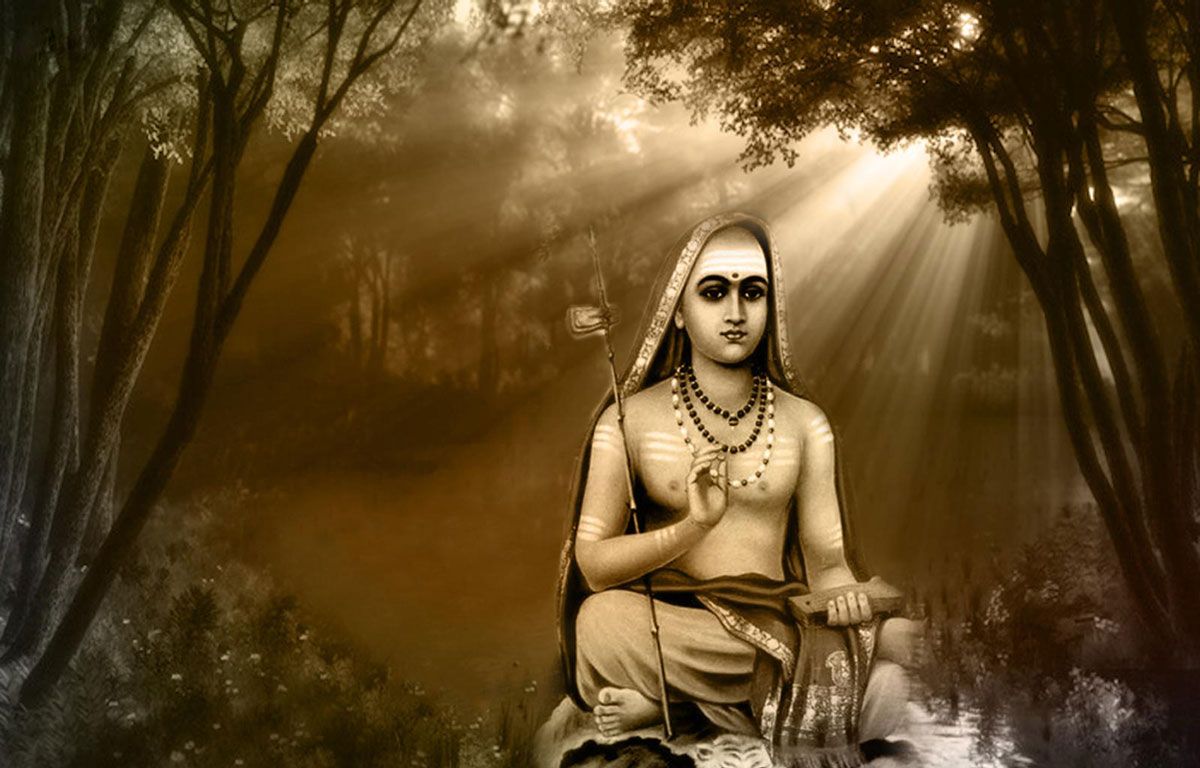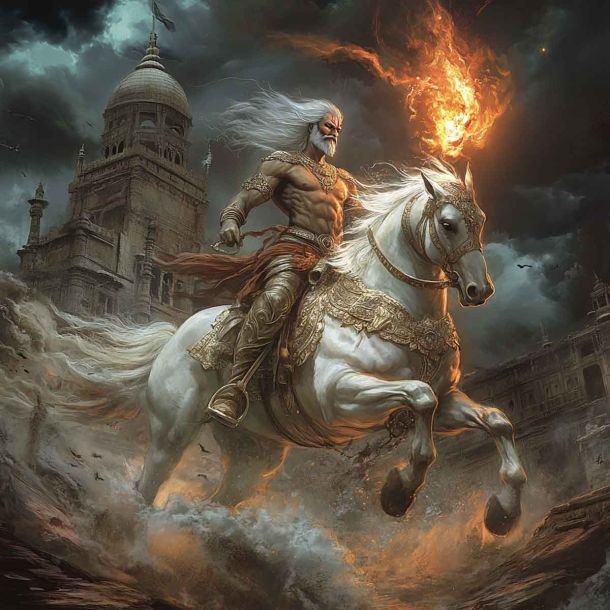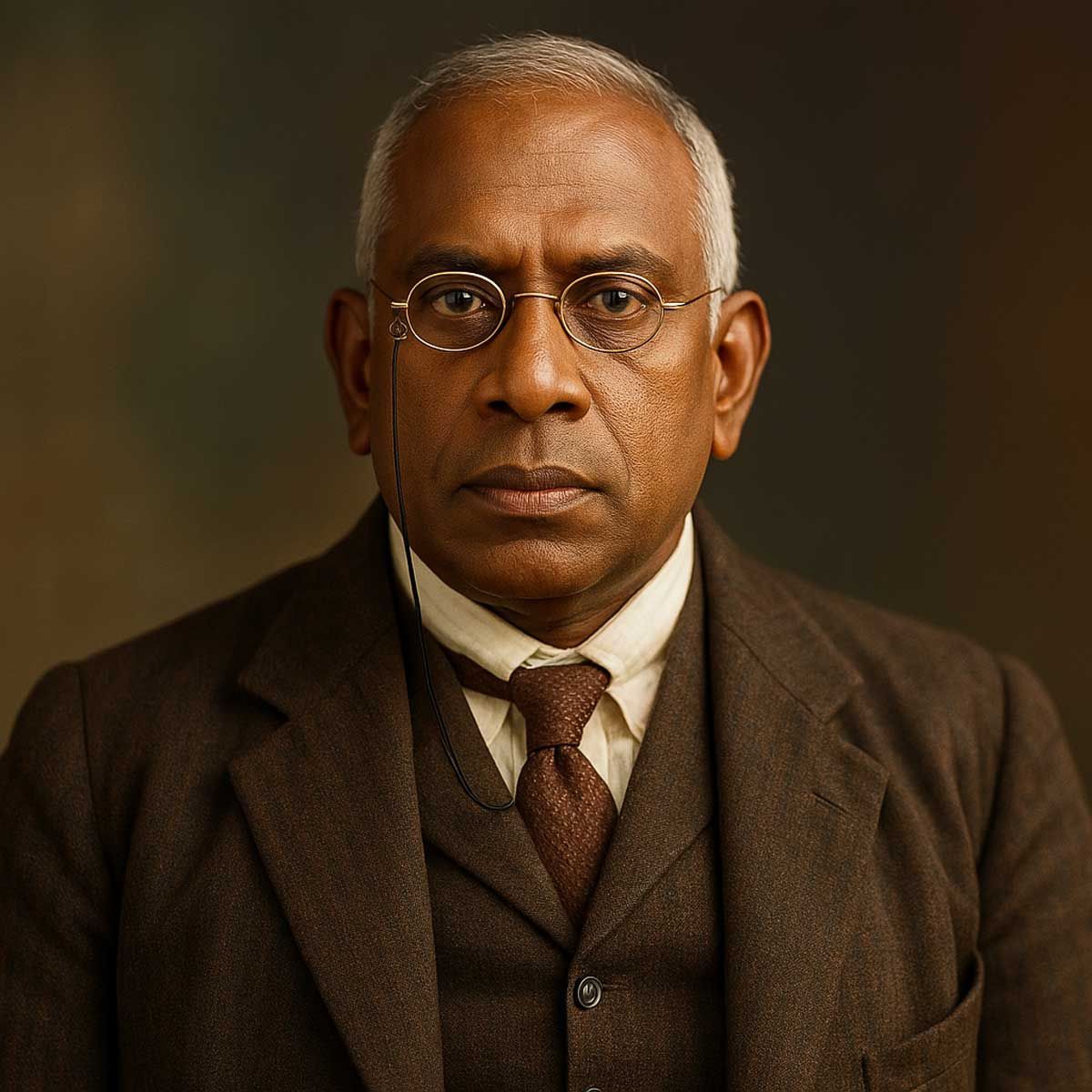More Coverage
Twitter Coverage
Satyaagrah
Written on
Satyaagrah
Written on
Satyaagrah
Written on
Satyaagrah
Written on
Satyaagrah
Written on
Join Satyaagrah Social Media
Bhagwan Adi Shankara: Reviver and reformer of Hindu Dharma

Bhagwan Adi Shankaracharya (Adi Shankara) walked the earth at a time when Hindu Dharma was being challenged by Jain, Buddhist faiths, and other avedic (non-Vedic) faiths totaling 72. He is credited with having reformed and revived Hindu Dharma. He propagated Advaita Vedanta (non-dualistic philosophy). He also unified Bharat by spreading his Vedic teachings across the length and breadth of Bharatvarsh.
In this regard, Dr. David Frawley says:
Though Shankara was born in Kerala, he spread Vedic teachings throughout Bharat as far as Kashmir. Clearly, he recognized the cultural unity of Bharat. If there is any doubt Bharat existed as a country at the time, Adi Shankara’s work proves this to have been a fact.
Adi Shankara organized four great mutts across Bharat (Dwarka, Puri, Sringeri and Joshimath). He is said to have renovated the char dham, or the four main Himalayan temples of Badrinath, Kedarnath, Gangotri and Yamunotri. He reorganized Hindu worship into the five deity lines of Shiva, Vishnu, Devi, Ganesha and Surya. His hymns or stotras to all the main Hindu deities remain commonly chanted in pujas and temple rituals in the north and south Bharat.
Adi Shankara traveled throughout Bharatvarsh on foot, not once but thrice, teaching the Advaitic principles. The Digvijaya Yatra of Bhagwan Adi Shankara was meant to unify Bharatiyas in the spirit of national integration as well as bring about the country’s unity physically, geographically as well as spiritually.
 |
Adi Shankara served as and continues to be an inspiration for Hindu reformers. In addition to several works on Vedanta, he also wrote Bhashyas (commentaries) on Upanishads, Brahma Sutras, and Bhagavad Gita. He laid out the Jnana Marg in detail in all his Vedantic philosophical works. He is not only credited with the revival of the Jnana Marg but also refining Bhakti Marg.
Adi Shankara believed that Bhakti Marg was the most suitable in bringing about equality and harmony among various religious sects and one that appealed to commoners and touched their sincere emotions as compared to rigid intellectual philosophies. In his view, Bhakti (devotion) was the easiest and most dynamic way to attune the human mind towards God-realization.
Hence, Adi Shankara Bhagavad Pada is rightly known as Shanmata Pratishtapaka meaning the one who re-established six subsects denoting Hindu ways of worship dedicated to six principal divinities namely Saivam (Shiva), Shaktism (Shakti), Kaumaram (Kartikeya), Ganapatyam (Ganapati), Sauram (Surya) and Vaishnavism.
Adi Shankara felt that philosophical works may be difficult for the layperson to grasp and therefore, he composed several stotras so that Bhaktas (devotees) may connect with the Bhagwan of his/her choice. Hindus across the country continue to recite them to this day. We shall take a look at some of Adi Shankara’s beautiful compositions.
Kanakadhara Stotram
This prayer eulogizes Devi Mahalakshmi and recited for obtaining good fortune. It so happened that once on his bhikshatana rounds, Shankara reached an extremely poor lady’s hut and asked for bhiksha. The poor lady had nothing to offer but she had no heart to turn away young Shankara empty-handed. After searching around her hut, she came across a single amla fruit and offered the same to Shankara with a heavy heart regretting that she was unable to offer anna-bhiksha (rice as bhiksha) to the Brahmachari.
Adi Shankara was moved by the devotion of the poor woman and sang the Kanakadhara praising Devi Mahalakshmi asking Her to drive away the woman’s poverty by bestowing her with riches. Devi, however, said that the woman was destined to suffer poverty as she hadn’t done any dana (donations) in her previous births.
Adi Shankara then convinced Devi saying even if she hadn’t done any good deeds in her previous births, she had offered the amla fruit with much devotion for which she should be blessed. Pleased by Adi Shankara’s arguments and the beautiful stotra, Devi Mahalakshmi blessed the woman by showering golden amla fruits.
Ashtakams
Ashtakams are eight-versed stotras composed in praise of various deities in their various forms and rivers. Shivashtakam, Kalbhairavashtakam, Bhramarambashtakam, Pandurangashtakam, Jagannathashtakam, Krishnashtakam, Govindashtakam, Gangashtakam, Yamunashtakam, and Narmadashtakam are some of the Ashtakams composed by Adi Shankara.
There are many other stotras dedicated to various Bhagwans and Devis of the Hindu pantheon. However, a composition of Adi Shankara that isn’t dedicated to any deity but one that must be spoken of is Mathru Panchakam, a five-shloka composition where Bhagwan Shankara speaks of the sacrifices made by his mother while at the same time repents that he was unable to fulfill the duties of a son.
Adi Shankara being the only child, his mother Aryamba was hesitant to allow him to take up sanyasa (renunciation). He was ultimately successful in convincing her but she agreed to accede to his demand on the condition that he would be present at the time of her death and also perform her final rites. True to his word, Adi Shankara traveled from Sringeri to be by his mother’s side as she was nearing her end. It was then that he composed the Mathru Panchakam dedicated to his mother and her sacrifices.
It captures the emotional side of Adi Shankara Bhagavad Pada as a son. There are hardly any compositions that capture the sacrifices a mother makes in as moving a manner as the Mathru Panchakam does.
Today as we celebrate the Jayanti of Bhagwan Adi Shankara Bhagavad Pada, we Hindus owe immense gratitude to the great Guru who reformed Hindu Dharma saving it from being disintegrated and purified both Jnana and Bhakti Margs. If we as Hindus are able to celebrate Hindu festivals and follow Hindu Dharma then it is only due to Adi Shankara.
We offer our prayers at the lotus feet of Bhagwan Adi Shankara on this auspicious occasion of his Jayanti.
श्रुति स्मृति पुराणानाम् आलयम करुणालयम्।
नमामि भगवत्पादम शंकरं लोक शंकरम्॥
śruti smṛti purāṇānām ālayama karuṇālayam |
namāmi bhagavatpādama śaṁkaraṁ loka śaṁkaram ||
Meaning: I prostrate to Adi Shankaracharya, an incarnation of Lord Shiva, who causes welfare to the universe, who is the repository of the Divine Knowledge of Vedas, Upanishads, and texts of mythology, and who is the embodiment of mercy.
शंकरं शंकराचार्यं केशवं बादरायणम्।
सुत्र भाश्य कृतौ वन्दे भगवन्तौ पुनः पुनः॥
śaṁkaraṁ śaṁkarācāryaṁ keśavaṁ bādarāyaṇam |
sutra bhāśya kṛtau vande bhagavantau punaḥ punaḥ ||
Meaning: I offer obeisances again and again to Bhagwan Veda Vyasa, the author of the Brahma Sutras, who is none other than Bhagwan Vishnu, and Bhagwan Shankaracharya, the commentator on those Sutras, who is none other than Bhagwan Shiva.
सदा शिव समारमभां शङ्कराचार्य मध्यमाम्॥
अस्मदाचार्य पर्यन्तां वन्दे गुरु परम्पराम्॥
sadā śiva samāramabhāṁ śaṅkarācārya madhyamām ||
asmadācārya paryantāṁ vande guru paramparām ||
Meaning: I salute the sacred Guru-parampara (lineage of Gurus), which begins from the ever-auspicious Lord Shiva, in the midst of which (lineage) is Adi Shankaracharya, and which comes up to my Gurudev.
 Support Us
Support Us
Satyagraha was born from the heart of our land, with an undying aim to unveil the true essence of Bharat. It seeks to illuminate the hidden tales of our valiant freedom fighters and the rich chronicles that haven't yet sung their complete melody in the mainstream.
While platforms like NDTV and 'The Wire' effortlessly garner funds under the banner of safeguarding democracy, we at Satyagraha walk a different path. Our strength and resonance come from you. In this journey to weave a stronger Bharat, every little contribution amplifies our voice. Let's come together, contribute as you can, and champion the true spirit of our nation.
 |  |  |
| ICICI Bank of Satyaagrah | Razorpay Bank of Satyaagrah | PayPal Bank of Satyaagrah - For International Payments |
If all above doesn't work, then try the LINK below:
Please share the article on other platforms
DISCLAIMER: The author is solely responsible for the views expressed in this article. The author carries the responsibility for citing and/or licensing of images utilized within the text. The website also frequently uses non-commercial images for representational purposes only in line with the article. We are not responsible for the authenticity of such images. If some images have a copyright issue, we request the person/entity to contact us at This email address is being protected from spambots. You need JavaScript enabled to view it. and we will take the necessary actions to resolve the issue.
























